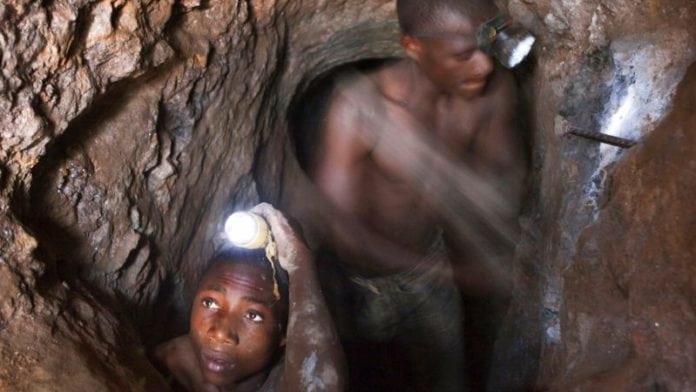
After years of protests and stand-offs with police and security guards, the June victory which saw thousands of zama-zamas (artisanal and illegal miners) in Kimberley acquire a mining right is shifting the debate on artisanal mining in South Africa, highlighting its economic potential and the shortfalls in the current regulatory framework.
Artisanal mining is allowed in very specific and very limited situations in South Africa under current laws, but for all practical purposes, exceptional permission is required – but nearly impossible to get – from the minister of mineral resources in order to mine on the scale that is taking place not only in Kimberley, but in many other parts of the country.
In the Burgersfort area of Limpopo, for example, large-scale illegal chrome mining is taking place without any adherence to environmental or health and safety laws. While the Department of Mineral Resources (DMR) has intervened in times of crisis, such as when an illegal miner dies, there is no pro-active engagement or enforcement.
“There is massive opportunity and it is entirely neglected by this lack of will by the DMR to have a structured approach to artisanal mining,” says Johan Lorenzen, associate at Richard Spoor Attorneys.
“A number of other African countries, such as Zimbabwe and Ghana, have policies and programmes that specifically target support to enable artisanal miners. It is mind-boggling that South Africa, where the mining industry started with artisanal miners in the diamond sector [in the late 1800s], still doesn’t have that in place,” he says.
Proponents believe a friendlier regulatory regime for artisanal mining will limit the exploitation of illegal miners, allow them to sell minerals legally at market prices, improve health, safety and environmental standards, and boost jobs and the economy.
“The more we’ve talked to people, the more we’ve realised this is not an insurmountable problem. This is not a systemically threatening problem. It’s actually a real economic alternative that can be viable if we focus our energies in the right direction,” says Christopher Rutledge, natural resources manager at ActionAid South Africa.
The Minerals Council – and even the DMR – agrees.
Regularising artisanal miners – provided that it can be done safely, in an environmentally responsible manner and without undermining the health, safety and security of others – could ensure livelihoods for thousands of ex-miners who had lost their jobs due to a decline in formal large-scale mining in South Africa, the Minerals Council said in response to questions.
Godfrey Oliphant, the deputy minister of mineral resources, says the department is “quite adamant [in] minimising illegal mining because that helps to regularise people; they will pay their taxes; they’ll be trading legally.
“We are actually throttling economic progress by not allowing people to work,” Oliphant says. “We need to be flexible in what we do within the remit of the law.”
The law is part of the problem, and so ActionAid and Wits University have embarked on empirical studies on the economic impact of artisanal miners, legal and illegal, and to determine which regulatory changes are required to build the artisanal mining sector. More work also needs to be done on the type of artisanal mining that can be done safely and in a commercially viable manner.
Oliphant says there are two areas that can help open up the industry for artisanal miners – ownerless mines that could be remined or require rehabilitation work, and areas where companies own mining rights, but don’t plan to mine.
“Our encouragement for the mining companies is to say: We’ve got a lot of unemployment, we’ve got a lot of people who’ve been retrenched from the mines, we’ve got a lot of black people who want to get into mining. Let’s work together so where you have huge areas that you don’t plan to mine, let’s not hog the minerals.”











